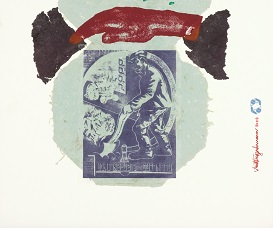Practical Lessons from the Manual of Carioca Judaism according to Paulo Blank
DOI:
https://doi.org/10.35699/1982-3053.2021.36805Keywords:
Formation Novel, Mentch, Paulo BlankAbstract
In addition to proposing to account for a life story or part of it, the formative novel needs to accommodate to a series of other classifications that are sometimes coupled to one or more particular categories. Such is the novel Mentch, a arte de criar um homem (Mentch, the art of creating a man), by Paulo Blank, which proposes to include in little Paulo’s formation all the virtues of being a Jewish boy in Rio de Janeiro in last century’s 50s, as well as the typical experiences of the city at that time. The book can be approached under other categories, as a novel of maturity dressed in Bildungroman clothing or as a typical work of Jewish culture. The appreciation of the novel lends itself to unraveling aspects of the instigating Jewish universe of Rio de Janeiro at that time.
Downloads
References
BLANK, Paulo. Mentch, a arte de criar um homem. Rio de Janeiro: 7 Letras, 2016.
BUARQUE, Chico; SIVUCA. João e Maria, 1976.
HARSHAV, Benjamin. The Semiotics of Yiddish Communication. In: WIRTH-NESHER, Hana. What is Jewish Literature? Philadelphia, Jerusalem: The Jewish Publication Society, 1994.
ROSTEN, Leo. The Joys of Yiddish. Nova York, McGraw-Hill, 1968. In: KAWASAKI, Guy. How to Be a Mensch in How to change the world. 11.02.2006. Disponível em: https://web.archive.org/web/20081019024918/http://blog.guykawasaki.com/2006/02/how_to_be_a_men.html. Acesso em: 20 ago. 2018.
SELIGMANN-SILVA, Márcio. Palavras introdutórias. Remate de males. Dossiê “Literatura como uma arte da memória”. 26.1. Campinas, jan.-jun. 2006.
WIRTH-NESHER, Hana. What is Jewish Literature? Philadelphia, Jerusalem: The Jewish Publication Society, 1994.
Published
How to Cite
Issue
Section
License
Copyright (c) 2021 Arquivo Maaravi: Revista Digital de Estudos Judaicos da UFMG

This work is licensed under a Creative Commons Attribution 4.0 International License.
Os direitos autorais pertencem exclusivamente aos autores. Os direitos de licenciamento utilizados pelo periódico é a licença Creative Commons Attribution 4.0 (CC BY 4.0): são permitidos o compartilhamento (cópia e distribuição do material em qualquer meio ou formato) e adaptação (remix, transformação e criação de material a partir do conteúdo assim licenciado para quaisquer fins, inclusive comerciais.






